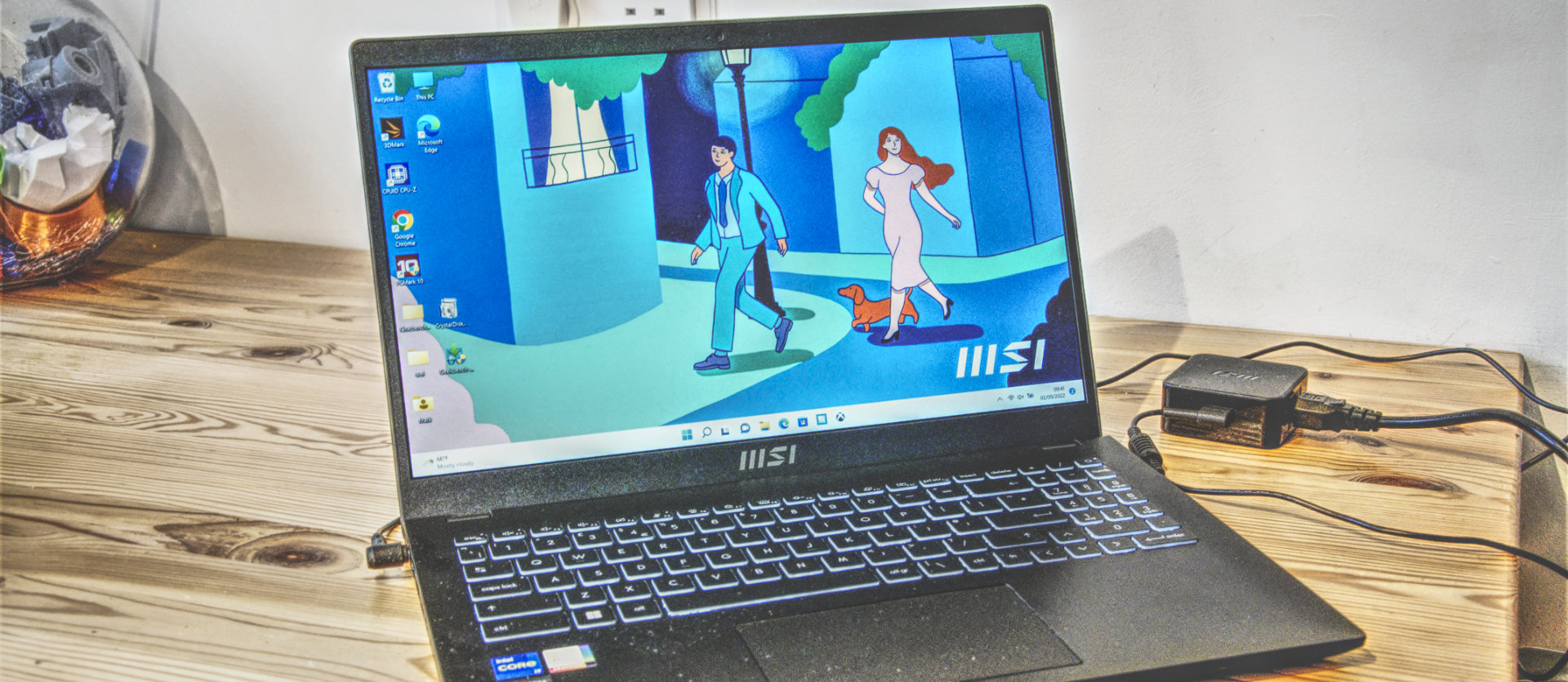TechRadar Verdict
For the price, it’s hard to criticise the Modern 15, as it delivers a good screen and excellent processor platform. However, soldered RAM and a slug of an NVMe drive take some of the shine off what is mostly an excellent system.
Pros
- +
Powerful CPU
- +
Iris Graphics GPU
- +
Keyboard with numeric pad
Cons
- -
Slow NVMe drive
- -
RAM can’t be upgraded
- -
Only one USB-C port
Why you can trust TechRadar
While MSI tends to focus on niche sectors of the laptop market, like workstations and gaming systems, they also make a few designs with a much broader appeal.
The MSI Modern 15 B12M is a system that could fall within the budget of many laptop purchasers and not necessarily exclusively for business buyers. However, the Modern series is part of the MSI Business & Productivity collection.
It sports a large bright display and elegant styling that utilises the latest Intel mobile platform.
With so many boxes already ticked, is this the affordable laptop its owners will love?
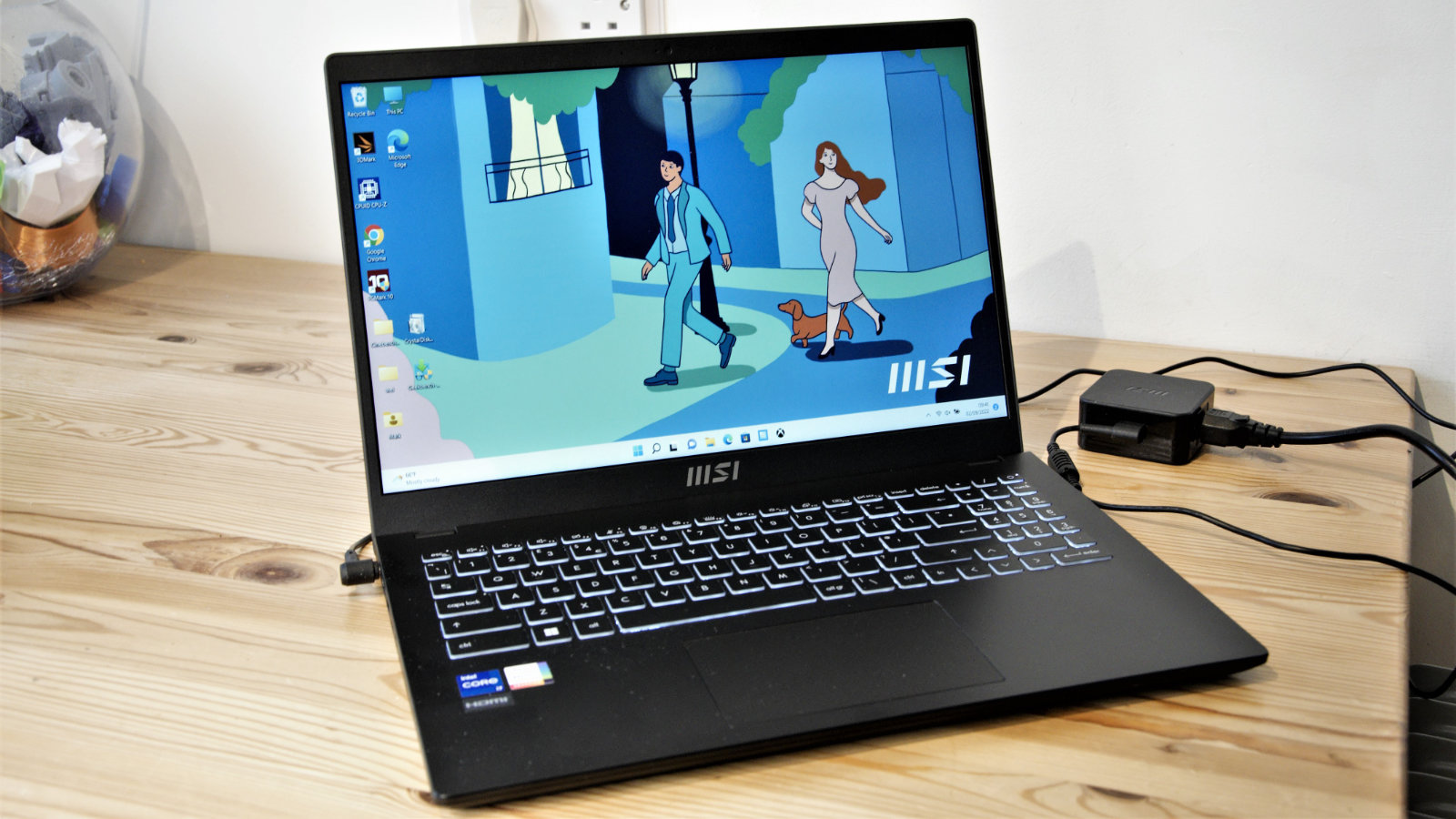
Price and availability
MSI offers two SKUs of the Modern 15 B12M in the UK, the B12M-027UK and B12M-026UK, with the hardware reviewed here being the latter.
What’s odd about these SKUs is that according to the MSI website, the only specification difference between them is the part number, as all the hardware appears identical.
Available on pre-order, it costs just £598.99 from Scan and £599 from Amazon.co.uk.
In the USA, the SKU of this machine is typically the B12M-014, and that costs $849 from Newegg.
The B12M-014 differs from the UK SKUs in having a Core i5 processor, not a Core i7, but offsets this downgrading with a bigger 52Whr battery, compared with the 39Whr in the UK SKU.
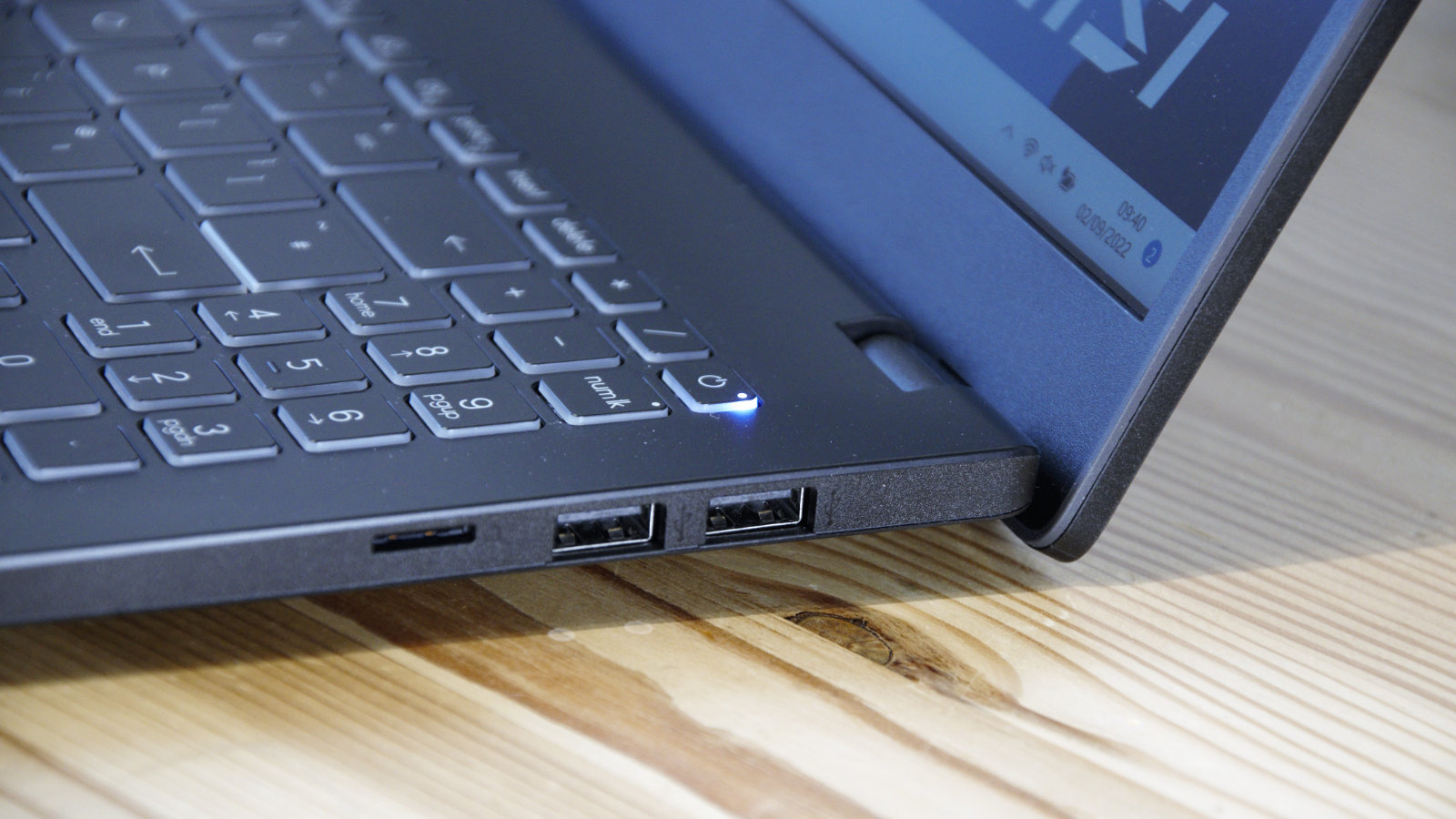
Design
When MSI isn’t trying to attract gamers, its designers can achieve some elegant results, and the Modern 15 provides decidedly classy first impressions.
The 15.6-inch display necessitates that this is a substantial chassis, but it has a relatively thin cross-section and is impressively lightweight at just 1.75kg.
The construction here is primarily plastic, though the top cover with the mirror-finish MSI logo emblazoned on it might have a thin alloy skin under the charcoal grey paint scheme.
Being only 2cm at its thickest negates the hinge area for ports. Therefore all of these are on the sides, with the rear used exclusively for venting heated air.
The underside has plenty of ventilation holes to help ingest fresh air, and four tiny rubber feet should lift the machine enough to provide the necessary clearance.
Eleven screws on the underside provide access to the internals if you can ignore the label covering one screw with the words ‘Factory Seal’ printed on it.
As MSI only provides a single year of warranty on the Modern 15, owners only need to exhibit restraint for a relatively short period before that seal becomes irrelevant.
Opening the machine reveals a large and easy-to-use backlit keyboard surrounded by a very smooth metal-skinned surface. This apron easily has one of the largest touchpads we’ve seen, and the keyboard is large enough that it includes a small but workable numeric pad.
The membrane keyboard avoids the very squishy feeling familiar amongst cheap systems, and when combined with ample sizing of the keytops, it offers a decent opportunity for those that need to type on their laptops, not just surf.
So far, so good. But the collection of ports is the first aspect of the Modern 15 that we thought could have been better.
On the left side is the power inlet, HDMI out, a Type-A USB, a single USB-C port and a 3.5mm audio jack. On the right is two USB 2.0 Type-A ports and a MicroSD card slot.
Our first disappointment with this arrangement is that MSI is still delivering machines with those annoying L-shaped pin-barrel chargers, the type that damages the machine if they’re unexpectedly yanked.
Given that a USB-C port is in this design, why wasn’t this used for charging?
Curiously, we plugged a third-party charger into the USB-C port, and it charged the machine, so clearly, some crossed wires in the MSI design and specifications departments there.
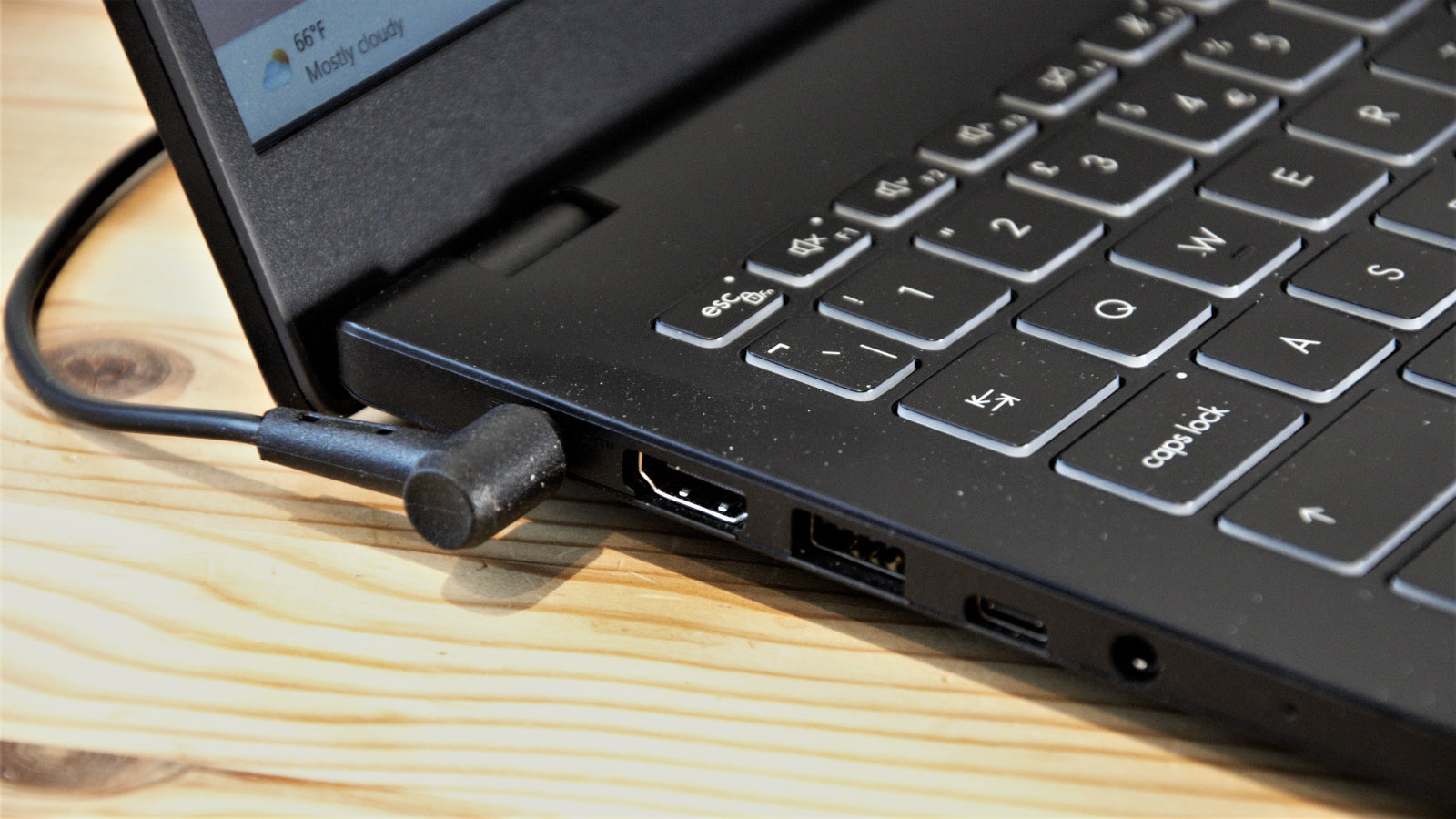
A better layout for this machine might have been one each of USB 3.0 and 2.0 (Type-A) on the right and two USB-C on the left, but that wasn’t the one MSI chose.
Better choices were made in picking the IPS panel, as this is a very crisp display. The natural resolution is 1080p, but the colour gamut isn't massive. While this doesn't make it ideal for graphics work, this is something to be expected in such an affordable laptop.
The side bevels are small, and just enough space was left under it to get another MSI logo on this machine. At the top is a narrower edge where the webcam and microphones are centrally located.
Sadly, MSI didn’t include any privacy mechanism, so you must provide your own piece of tape if you want any.
Overall, the Modern 15 looks and feels like a more expensive machine, and while a few places might have been better considered, it's generally fit for purpose.
However, looking sleek and having enough horsepower can often be two different things, so what has the Modern 15 got that’s notable under the hood?
Hardware
Here is the MSI Modern 15 B12M configuration sent to TechRadar for review:
CPU: Core i7-1255U
Graphics: Iris Xe Graphics
RAM: 8GB DDR4 RAM
Screen: 15.6" FHD (1920*1080)
Storage: 512GB NVMe PCIe Gen3x4 SSD
Ports: 1x USB-C (compatible with USB 3.2 Type-A Gen 2), 1x USB 3.2Gen2, 2 x USB2.0 Type-A, 1x HDMI 1.4, 1x universal audio jack, and a MicroSD card reader.
Connectivity: Intel Wi-Fi 6 AX201(2*2 AX), Bluetooth 5.2
Camera: 1x IR & 720p HD Camera with Microphone
Security: dTPM 2.0 Chip
Weight: 1.75kg
Size: 359 x 241 x 19.99 mm (W x D x H)
Battery: 3cells, 39Whr Li-Polymer
This is one of the first machines that we’ve reviewed that uses the new 12th Gen mobile chips from Intel.
Much rides on the success of these processors and supporting chipsets, as neither the 10th and 11th Gen mobile offerings weren’t anything that Intel should be especially proud.
What specifically went wrong with these lines was Intel’s inability to scale down the fabrication of these chips leading to high power demands on the higher clock speed parts.
The Tiger Lake-H cored chips had a reputation that they were powerful but battery draining, and Intel has tried to address these limitations with the new Alder Lake cored Intel Core i7-1255U in this machine.
Where previously, Intel divided the mobile space into U and H series designs, covering general use and high performance, respectively. Though with the Alder Lake chips, they’ve now added a third, the P series, sitting between the U and H, offering a middle ground between power efficiency and performance.
As its code suggests, the i7-1255U is a U Series chip designed to provide the best use of power over performance.
All the chips so far released for the mobile 12th Gen are either Core i7 or i9, and the i7-1255U is one of the lower specification designs that offers ten cores (2 performance, 8 efficiency), and this processor is 12 thread capable.
The clock speed of this chip isn’t set at a specific baseline with a turbo option. Instead the clock control is flexible, and the E-cores and P-cores each have different maximum speeds.
Typically, the chip will run at around 2.6GHz doing simple tasks, with the E-cores increasing to 3.5GHz should demands increase. The two P-cores have a turbo mode that can take them to 4.7GHz briefly for short computing sprints.
Exactly what clocks you see will entirely depend on the nature of the task and how this relates to the thermodynamics inside the chip.
Another factor in the performance/power/heat equation is that the i7-1255U comes connected in the same package to an Iris Xe Graphics GPU, a significant improvement over the HD Graphics video technology Intel has been so reluctant to give up.
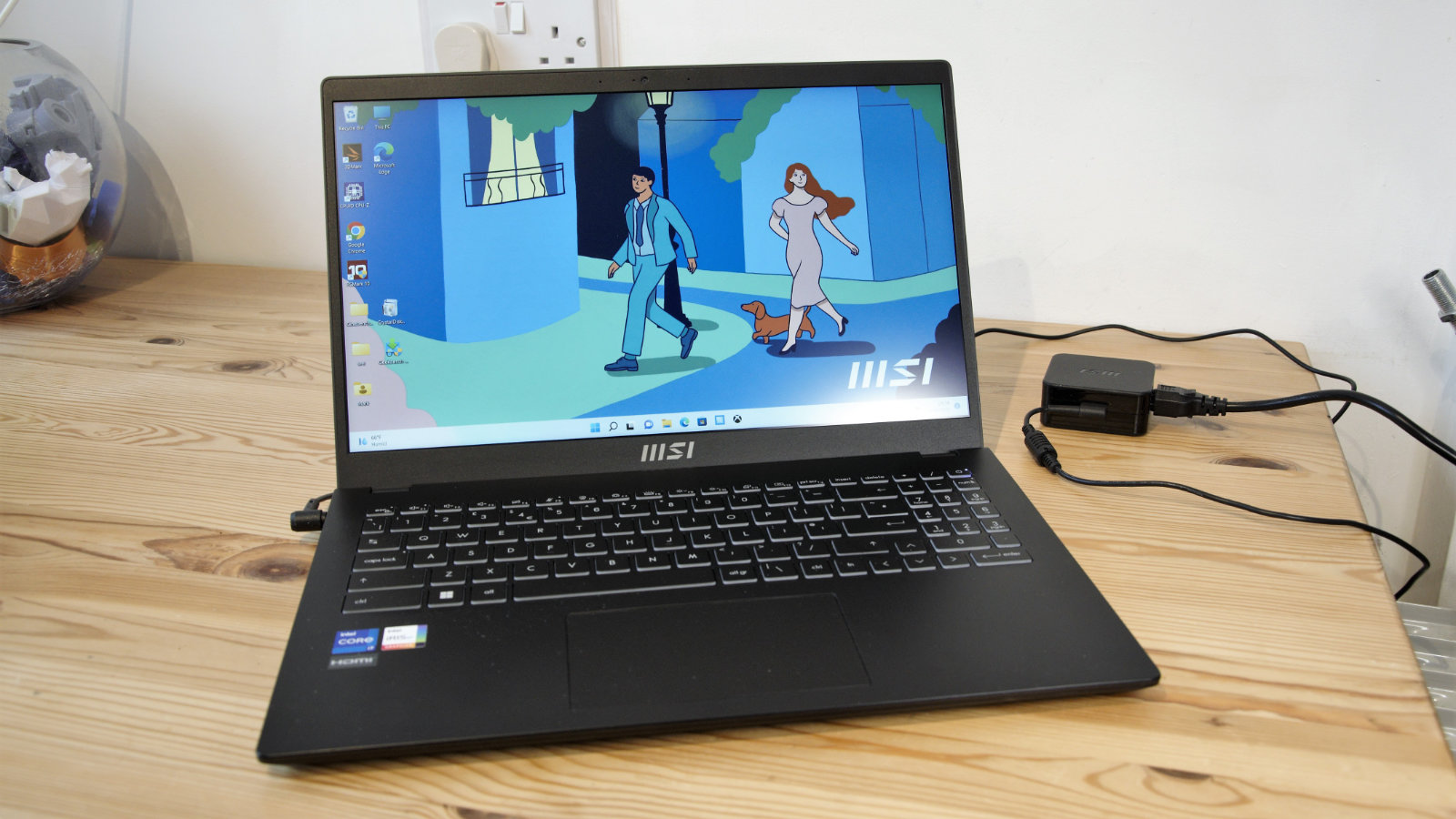
Having this better GPU does improve the scores on many graphics-related tests, but it's also another heat-generating component that impacts the frequencies that this CPU can realistically run for any prolonged period.
In the review SKU the machine came with 8GB of DDR4, though this processor can be used with DDR5 if the system maker desires.
While we didn’t void the warranty on the review machine to go inside, we’re reliably informed that the memory on this system is soldered into place, eliminating the possibility of a memory upgrade.
What is replaceable is the NVMe storage, with a slot compatible with Gen 3 drives that don’t have a heatsink attached. Our review system came with a Kingston 512GB OM8PCP3512B NVMe, an OEM entry-level drive created purely for system builders.
The Intel Wi-Fi 6 AX201 is also socketed, should something better be available in the future.
From a business perspective, the only major omission is a fingerprint reader or an IR ‘Windows Hello’ capable camera. But you could use an external USB-connected fingerprint sensor and replace the NVMe drive with one that supports hardware encryption.
- 1
- 2
Current page: Introduction, price, design and hardware
Next Page In use, performance and verdictMark is an expert on 3D printers, drones and phones. He also covers storage, including SSDs, NAS drives and portable hard drives. He started writing in 1986 and has contributed to MicroMart, PC Format, 3D World, among others.
